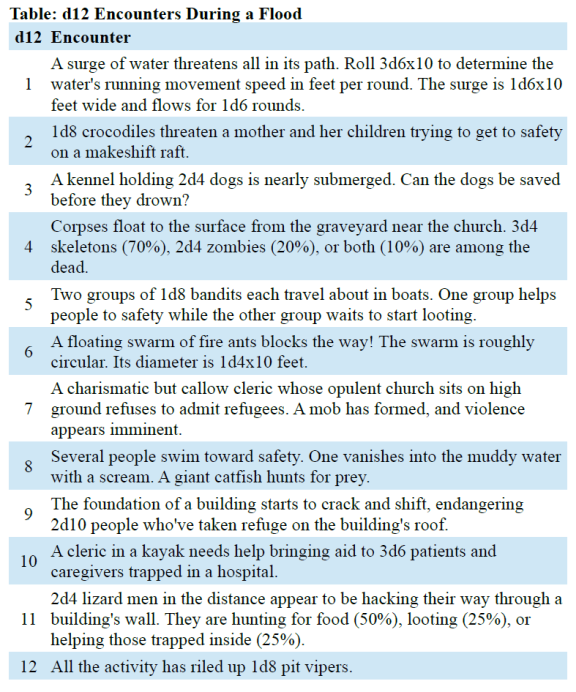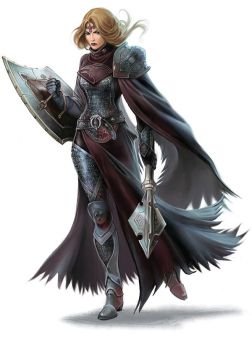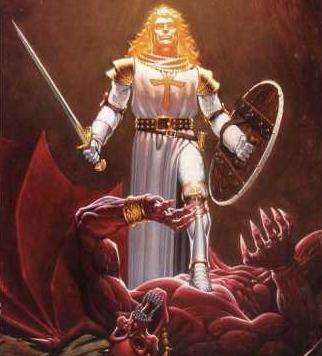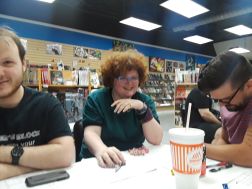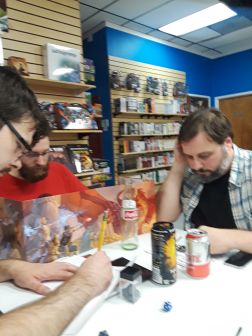Videoconference Nostalgia & Sword Golems
If you follow this site (and why wouldn’t you?), you’ve certainly noticed that I’ve lately posted a bunch of material, mostly new monsters, for 5E D&D. Why? Well, because that’s the game that my Saturday group currently plays, and I tend to focus most of my writing on whatever most recently has caught our attention. I’m even enjoying 5E, which is a surprise. Nothing I read about 4E, for example, tempted me to give it a test drive. 5E, however, hits a lot of sweet spots while at the same time staying away from the number-crunching, optimal-build-fetishizing that, in my opinion, has come to dominate 3.5 and Pathfinder.
All that said, I still want to play what I started with.
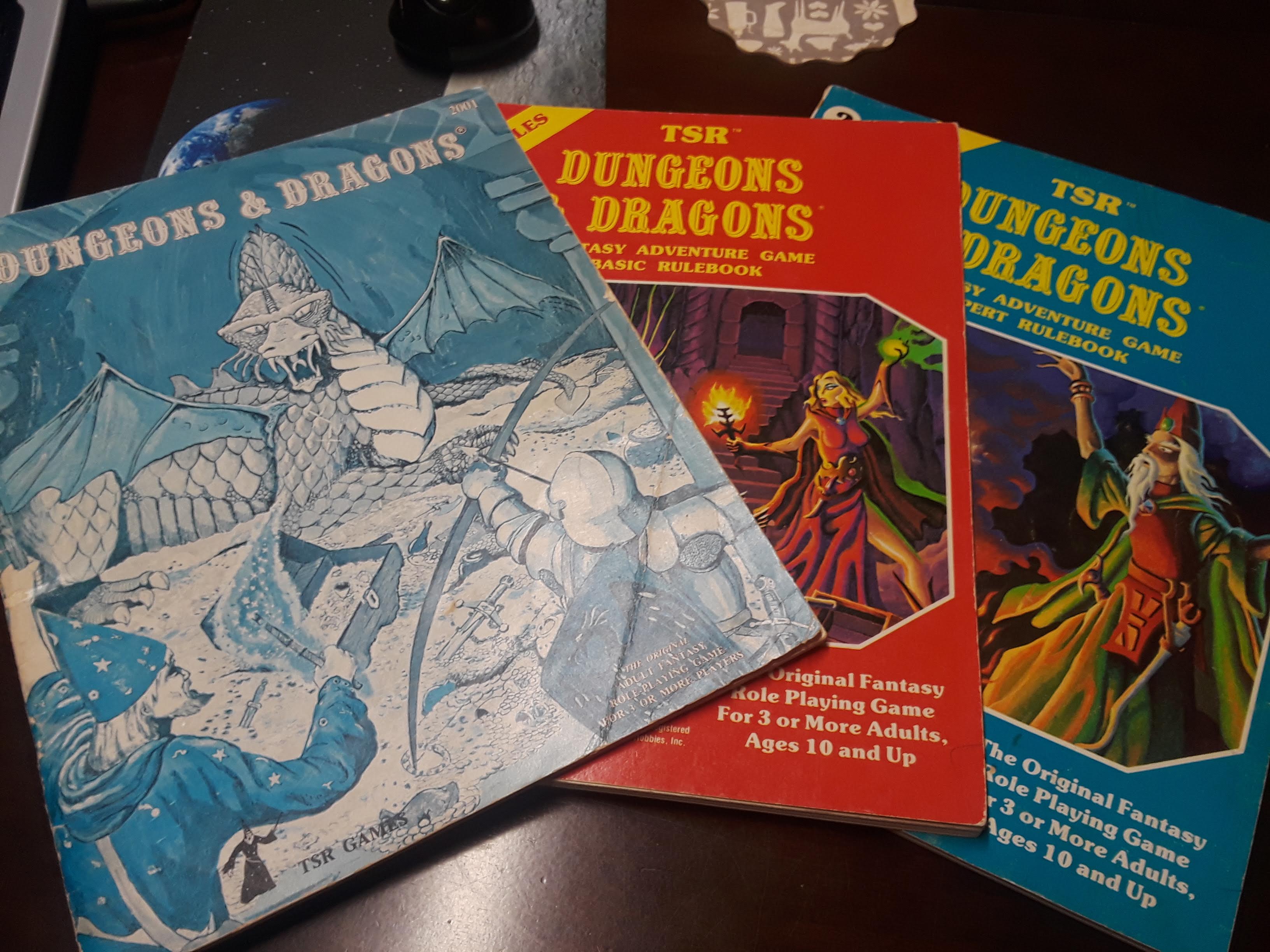
I’ve already talked a bit about how I got started with D&D. That was way back around 1977 to 1978. (I feel old.) We had some great games back then. The rules we had didn’t always make sense, and we argued about what this or that really meant, but in the end we were friends getting together to pretend we were adventurers in a fantastic world that at times seemed so much more interesting than the lower-middle-class, middle school world of broken families, drugs, and even gangs that existed at least on the peripherals of our lives.
I recently hosted a comedy-of-tech-errors game that used Swords & Wizardry with The Keep on the Borderlands, originally published in 1981, about three years after I started gaming and about four years before I graduated high school. We played via a videoconference system. The first session was just my son Christopher and me, but Mike and his son joined for session two. Mike was one of the people I gamed with way back when. He’s in California now, and that too far to drive to from Texas, so I don’t see Mike much. If you’re interested, you can watch the videos over at my YouTube channel.
Thanks to the quirky benefits of technology, I got to game with Mike again. It was a lot like old times, almost as if no time had really passed, although both he and I are noticeably older. Those friends I gamed with back in middle school and high school have either died too young or else have pretty much dropped out my life (or me out of theirs) completely. My current circle of face-to-face gaming friends? I didn’t know them in high school. Some of them weren’t born or else were toddling around in diapers when I was in high school.
So, I think I’m going to keep on with the Borderlands game. I’m pretty sure I can swing the various schedules so that we can meet twice or so a month. I might have to upgrade some of my technology. Maybe headphones or earbuds or something like that to help cut down on the background noise would be a good place to start.
Who knows? I might even try to figure out how Roll20 works.
But enough of that. “How about a new monster?” you say. Sure, but first check out David Masson over at Art Station. This guy has some serious talent. Today’s new monster is based on this piece by Mr. Masson.
The secrets of building a sword golem have been lost in the foggy reaches of history. While a spirit from the Elemental Plane of Earth usually infuses a golem, sword golems differ, for it is a spirit from the Elemental Plane of Air that gives the sword golem not only life, but also remarkable speed, intelligence, and will, albeit a will subordinated to the wishes of its creator.
Sword Golem
Medium construct, lawful neutral
Armor Class 18 (natural armor)
Hit Points 68 (8d8+32)
Speed 45 ft.
Ability Scores STR 16 (+3), DEX 19 (+4), CON 18 (+4), INT 10 (+0), WIS 12 (+1), CHA 10 (+0)
Skills Acrobatics +8, Perception +5
Damage Resistances lightning
Damage Immunities fire, poison, psychic; bludgeoning, piercing, and slashing from nonmagical attacks not made with adamantine weapons
Condition Immunities charmed, exhaustion, frightened, paralyzed, petrified, poisoned
Senses darkvision 60 ft., passive Perception 15
Languages understands and speaks the languages of its creator
Challenge 9 (5,000 XP)
Elegant Defense. At the start of its turn, the sword golem may choose to make fewer than six melee attacks. The benefits of its elegant defense depend on how attacks it forgoes:
* One Attack: When a creature misses the sword golem with a melee attack, the sword golem can use its reaction to riposte. The sword golem makes a melee attack against the creature that inflicts an extra 4 (1d8) points of piercing damage.
* Two Attacks: As above, plus sword golem’s AC against melee attacks increases by 2 points until the start of its next turn.
* Three Attacks: As both effects above, plus the sword golem’s elaborate sword maneuvers defend its allies. When a creature the sword golem can see attacks a target within 5 feet of the sword golem, the creature’s attack is made with disadvantage.
Elemental Absorption. Whenever the sword golem is subjected to fire damage, it takes no damage and instead regains a number of hit points equal to the fire damage dealt. Whenever the sword golem is subjected to lightning damage, it takes half damage and becomes energized. On its next turn, its rapier attacks inflict an extra 4 (1d8) lightning damage.
Immutable Form. The sword golem is immune to any spell or efect that alter its form.
Magic Resistance. The sword golem has advantage on saving throws against spells and other magical effects.
Magic Weapons. The sword golem’s weapon attacks are magical.
Actions
Multiattack. The sword golem makes up to six melee attacks.
Rapier. Melee Weapon Attack: +8 to hit, reach 5 ft., one target. Hit: 8 (1d8+4) piercing damage. The sword golem’s rapiers score a critical hit on a roll of 19 or 20.
Gust of Wind (Recharges after a Short or Long Rest). The sword golem unleashes a line of strong wind that duplicates the spell gust of wind.

